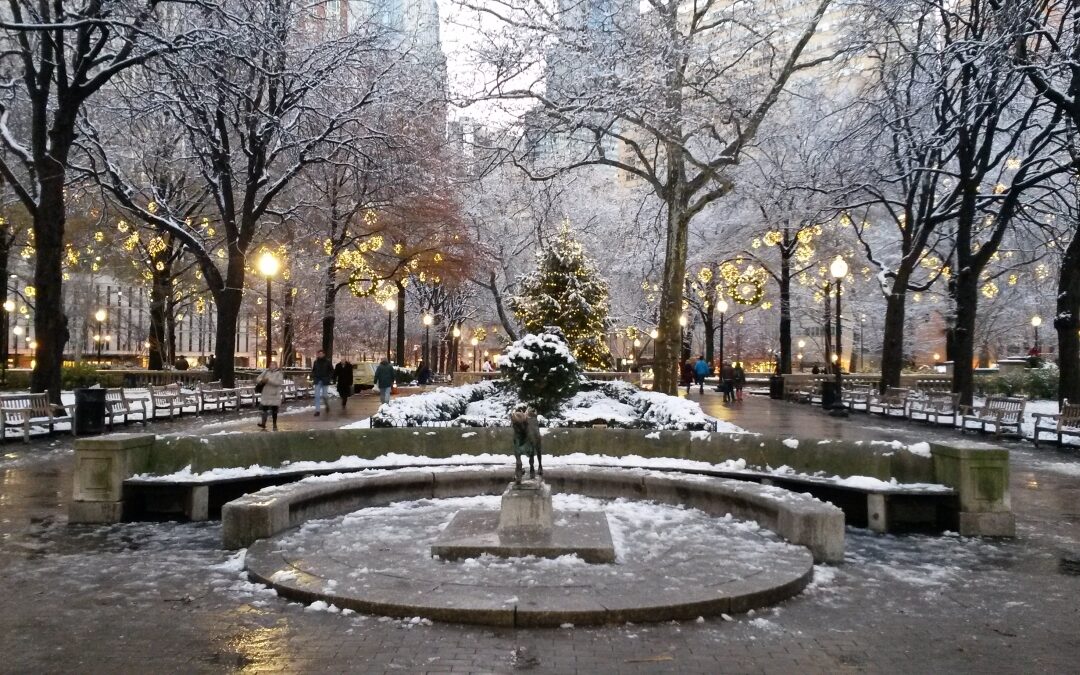
THE OLD URBANISM
by elementor | May 10, 2023 | Urbanism
Traditional urbanism is an easy sell; most people favor treed squares, fountains, and benches. People in Philadelphia crowd Rittenhouse Square, which was laid out in the 17th century, and whose Parisian details were planned by Paul Cret in 1913. The buildings lining the square are of many historical vintages: modern, moderne, and neoclassical. In a hundred years, in 2123, I suspect there will be even more variety, reflecting changed architectural tastes, changed materials, and changed styles. But the square itself, and the streets that define it, will likely be familiar; it’s not so easy to alter rights of way. This underscores an important distinction. Urbanism and architecture observe different time lines. It may be a mistake to tie traditional urbanism to traditional architecture, as many proponents do. The two are entirely different animals.
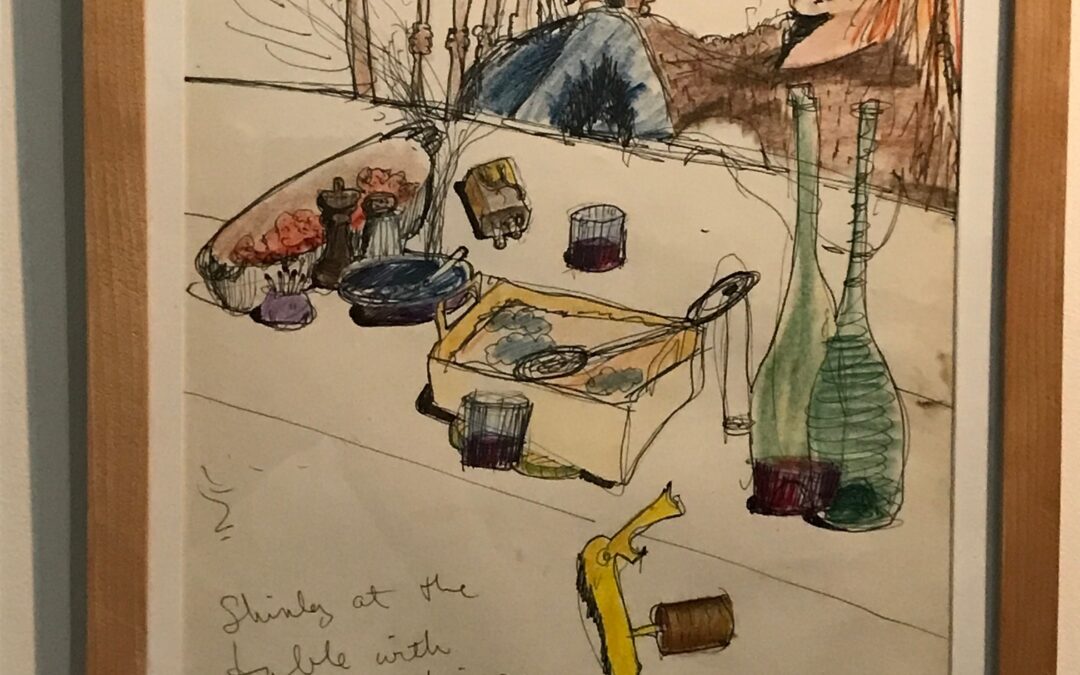
REMEMBERING
by elementor | May 7, 2023 | Modern life
I have different ways of remembering. I have framed an old sketch I came across that shows her in the first home we shared. “Shirley at the table with lots of things” I had written. “And Vitold” she’d added. I buy flowers; for the house, I say to myself, but really for her. I keep her favorite necklet on her night-table, sometimes I rotate it with bracelets and other pieces. Once in a rare while I spray her Sisley Eau de Soir—there is just a little left. What will I do when it runs out? We talk: Good morning I say. I tell her my plans for the day. I’m going shopping, I think I’ll stop at the wine store. I toast her when I open the bottle. I almost say “Santé,” but I stop myself. Not that.

NOTHING BUT THE FACTS, MA’AM
by elementor | Apr 30, 2023 | Modern life
When I started writing I found myself dealing with subjects about which I was not knowledgable: medieval history, economics, social mores. My habit was to go to the university library, find a relevant book in the card catalog, then go to that section of the stacks where I could leaf through many related books—old and new—on the same subject. I concentrated on reputable university and trade publishers, at least to start with. When I found a book that struck me as particularly apposite, I could make use of the writer’s reference notes and bibliography to dig deeper.
Of course the library had curated its collection, an advantage I no longer have with Google, which is more like a huge information scrap heap, some useful, most not. Google Books includes manuals, government directories, obscure indie publisher. Yet once in a while I can still find gold. But I still miss wandering in the stacks.
Which brings me to ChatGPT. I hear many enthusiasts saying that it is a wonderful replacement for Google. The parlor tricks aside—a sportscast in the style of Jane Austen—for me the big drawback in the lack of sources. Information is presented in such an authoritative voice that it is easy to believe. But is it believable? I recently tested ChatGPT by asking about the architect Paul Philippe Cret. It answered with a largely accurate biography, but opined that Cret had collaborated with Kahn and Wright. When I pointed out that this was not true, the bot agreed and apologized for the error. But what if I had not known? I asked about the source of the error but did not get a response—the bot keeps that card close to its chest. We had an extended conversation on the question of why Cret, who had built such important national landmarks as the Fed headquarters in DC and the Valley Forge arch, was considered less important than Wright and Mies, who were best known for weekend houses. I concluded that ChatGPT had pretty conventional modernist opinions about architecture, i.e. the social role of a building counts for little in its “greatness,” innovation is all, light and space are the key elements of a building, and so on. I pointed this out but the bot answered huffily that “I have no opinions.” I am not convinced.

GUESS WHERE?
by elementor | Mar 22, 2023 | Architecture
My friends Nancy and Randy Williams sent me this photo taken recently at the Villa Witold in Charleston, SC. The villa, inspired by the loggia of Palladio’s Villa Saraceno, was built in 2011 by Reid Burgess, George Holt, and Andrew Gould. Palladio built the original in 1548 outside Finale de Agugliaro, a small town in the Veneto. Described in detail in Charleston Fancy: Little Houses & Big Dreams in the Holy City.
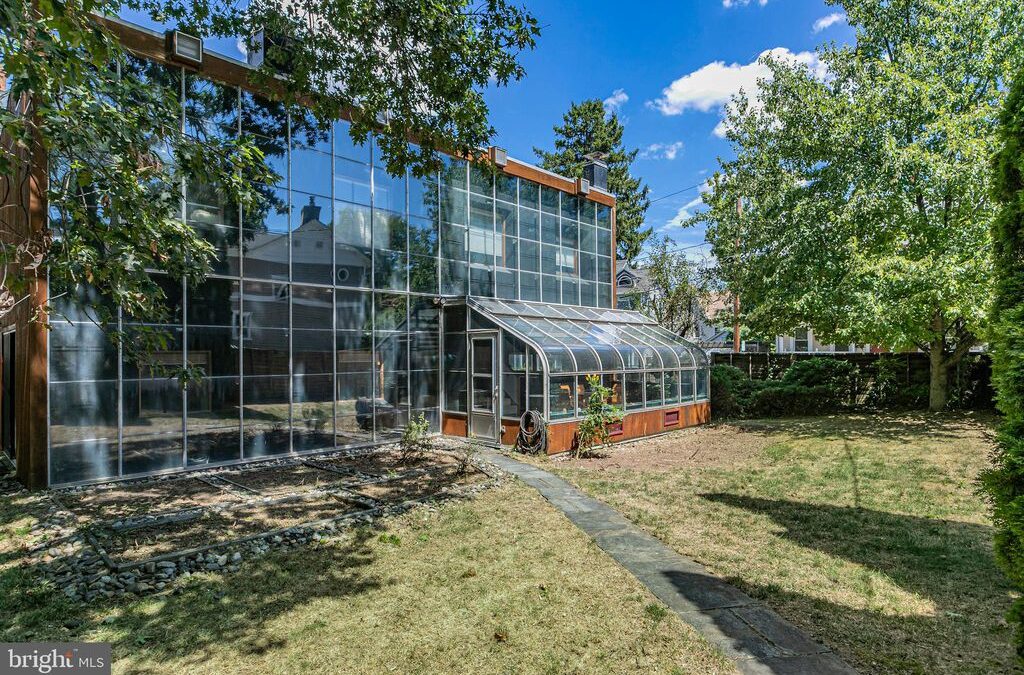
DOUGLAS KELBAUGH (1945-2023)
by elementor | Mar 9, 2023 | Architects, Architecture
Sorry to hear of Doug Kelbaugh’s passing. I met him at Seaside when he was involved in the New Urbanism movement, but I first heard of him in 1973, in connection with a solar house that he built for himself in Princeton. It made an impression because unlike most solar-heated houses of that period, which had sloping solar collectors and resembled wedges of cheese, the Kelbaugh House had real architectural qualities. The house was passively solar heated by means of a Trombe wall, named for its inventor, Félix Trombe (1906-85), a French engineer who was in charge of building a 1000 kW solar furnace in southern France. I was doing research on solar stills, and I heard Trombe speak at a UNESCO conference in Paris in the Seventies. The basic principle of his device was simple: a south-facing thick masonry wall painted black, an air gap, and a glazed wall. The sun warmed the masonry, which at night radiated heat to the interior of the house. No fans or pumps (hence the “passive” moniker), and no angled solar collector, just a masonry wall. There was a bit more to it, but that is the idea in a nutshell. Doug added glazed windows to the wall, which meant that, unlike a collector, view was not entirely blocked. Very elegant.
CLEARING IN THE DISTANCE REDUX
by elementor | Feb 16, 2023 | Landscape architecture
Gakugei-Shuppansha has published a Japanese edition of A Clearing in the Distance: Frederick Law Olmsted and America in the Nineteenth Century. This is the first foreign edition of the book, which was published by Scribner in 1999. Thanks to Mr. Hiroki Hiramatsu for spearheading this project and for his thoughtful translation. A social entrepreneur, Hiamatsu is the founder and CEO of Woonerf Inc. and co-founder of Green Building Japan.

AT THE BARNES
by elementor | Jan 27, 2023 | Architecture
In April 2005 I wrote my Slate column about the projected move of the Barnes Foundation to downtown Philadelphia: “Why not treat the galleries of the Barnes as an artistically significant artifact, and simply move them to the new location, burlap-covered walls and all? The result would resemble the transplanted historical interiors exhibited in many large museums, such as the Ottoman room at the Metropolitan Museum.” Well, that’s what they did—sort of. I had avoided visiting the new Barnes since I was attached to the original, but last week I finally relented. The collection hung as before (following a judge’s ruling), but thanks to Williams & Tsien’s tinkering, the feeling of the place had changed. Although the room layout was more or less the same, moldings had disappeared or been altered, and a kind of fussy modernist slickness permeated Paul Cret’s architecture. The collection itself can be a little overwhelming, and I was drawn—as I have been before—to Toulouse-Lautrec’s “A Montrouge.” After all those chubby Renoir nudes it is a breath of fresh air.
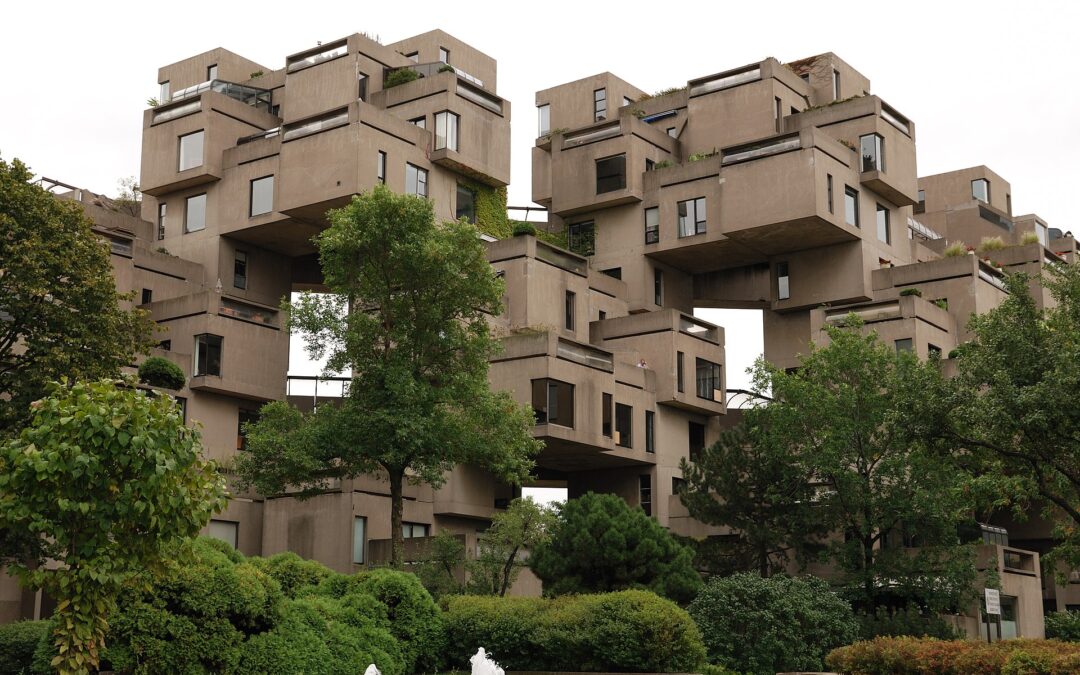
STACKED
by elementor | Dec 16, 2022 | Architecture
Duo Dickinson seems to have discovered the stacked box fad in a recent post on Common\Edge. Well, duh. In April 2009 I wrote a Slate column about “The Jenga Effect.” It was prompted by 56 Leonard Street, a New York apartment building designed by Herzog & De Meuron. Of course, what looked like a pile of stacked boxes was actually a conventional high-rise with cantilevers and setbacks. I think what attracted architects to stacking was the appearance of shakiness; architects in the past had always aimed at solidity, so why not go the other way? The granddaddy of stacked buildings was Habitat 67, but as I pointed out, Moshe Safdie’s stacked boxes were real boxes (of prefabricated concrete), and the stacking had a functional and structural logic. “While the rather loose arrangement appears random, it maximizes views from within the houses and provides one or more garden terraces for each unit. And the pyramidal stack looks very solid.”
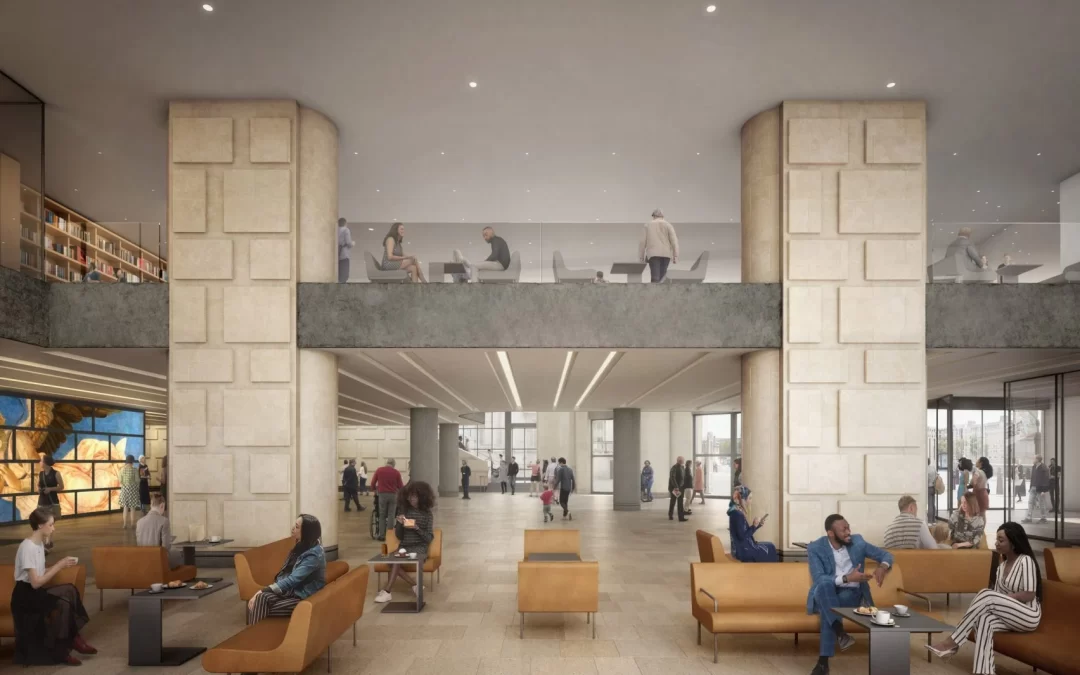
FRESHENING UP THE PAST
by elementor | Dec 4, 2022 | Architecture
The Sainsbury Wing of London’s National Gallery is an example of postmodernism, a style that was already in decline when Robert Venturi and Denise Scott Brown won a controversial competition to build this addition. In the eyes of many, including this writer, the Sainsbury Wing, like James Stirling’s Neue Staatsgalerie in Stuttgart, is one of the (rare?) paragons of postmodernism. So it was with dismay that I read the headline in Dezeen: “Sainsbury Wing Revamp Approved.” Revamp? Although the Sainsbury Wing is a Grade I-listed building, it apparently needs freshening up. The freshening up includes removing some of the non-structural columns in the lobby as well as carving a large Trump-like sign into the Portland stone facade. The chief motivation for the alterations is the dubious decision to convert the Sainsbury Wing into the main entrance to the Gallery. The lobby rendering released by Selldorf Architects shows a rather banal space that reminds me of an airport lounge, with none of the quirky brilliance that characterized the Venturi Scott Brown design. The British architecture critic Hugh Pearman told Dezeen that the proposed alterations “would be damagingly destructive—sterilizing the original architectural character of the building.” What a shame.
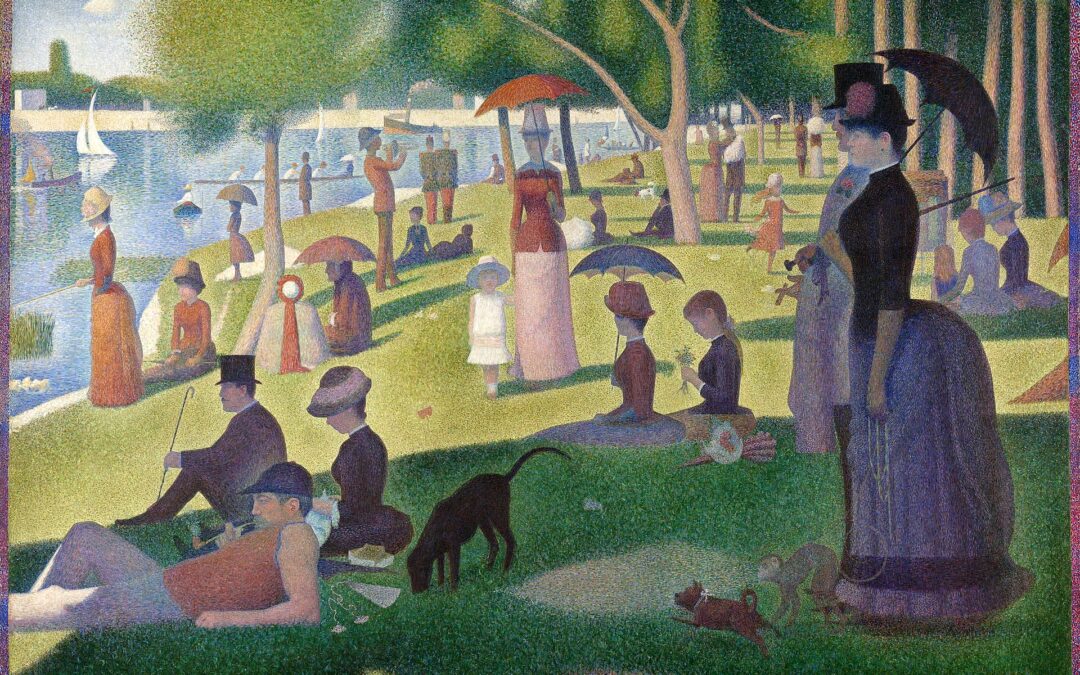
FOREIGN SHORES
by elementor | Nov 19, 2022 | Modern life
The Zhejiang University Press of Hangzhou has published Chinese translations of Home and Waiting for the Weekend. A reader of the latter will find a postcard with an image of Georges Seurat’s “A Sunday Afternoon on the Island of La Grand Jatte,” which is referred to in the book and was on the jacket of the Viking edition, back in 1991. Nice. Zhejiang has also published a translation of One Good Turn, which is a natural history of the screwdriver and the screw. It’s printed on black paper–a first for me–and has a screw post binding. Like a shop manual!
THE LATEST

